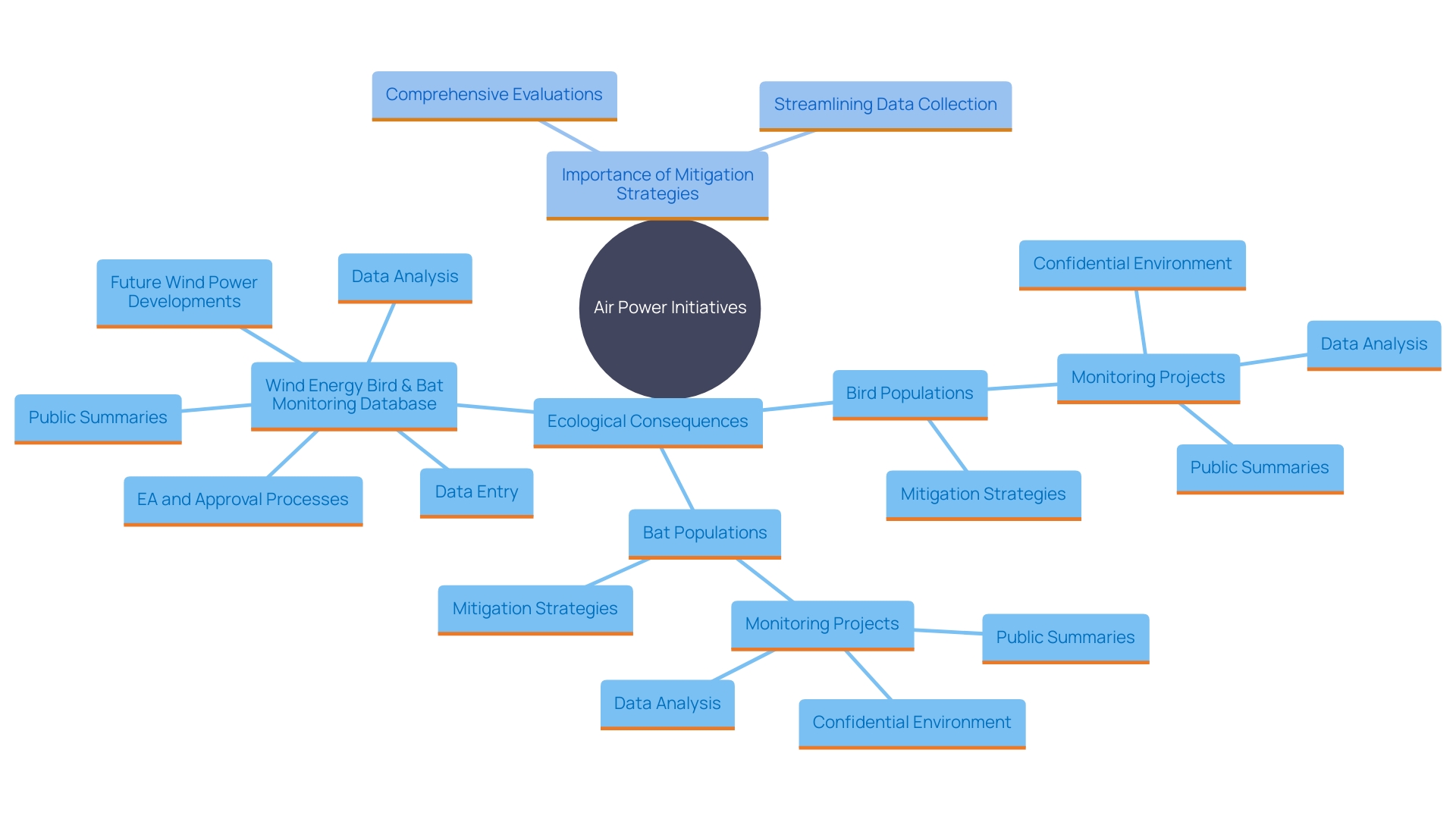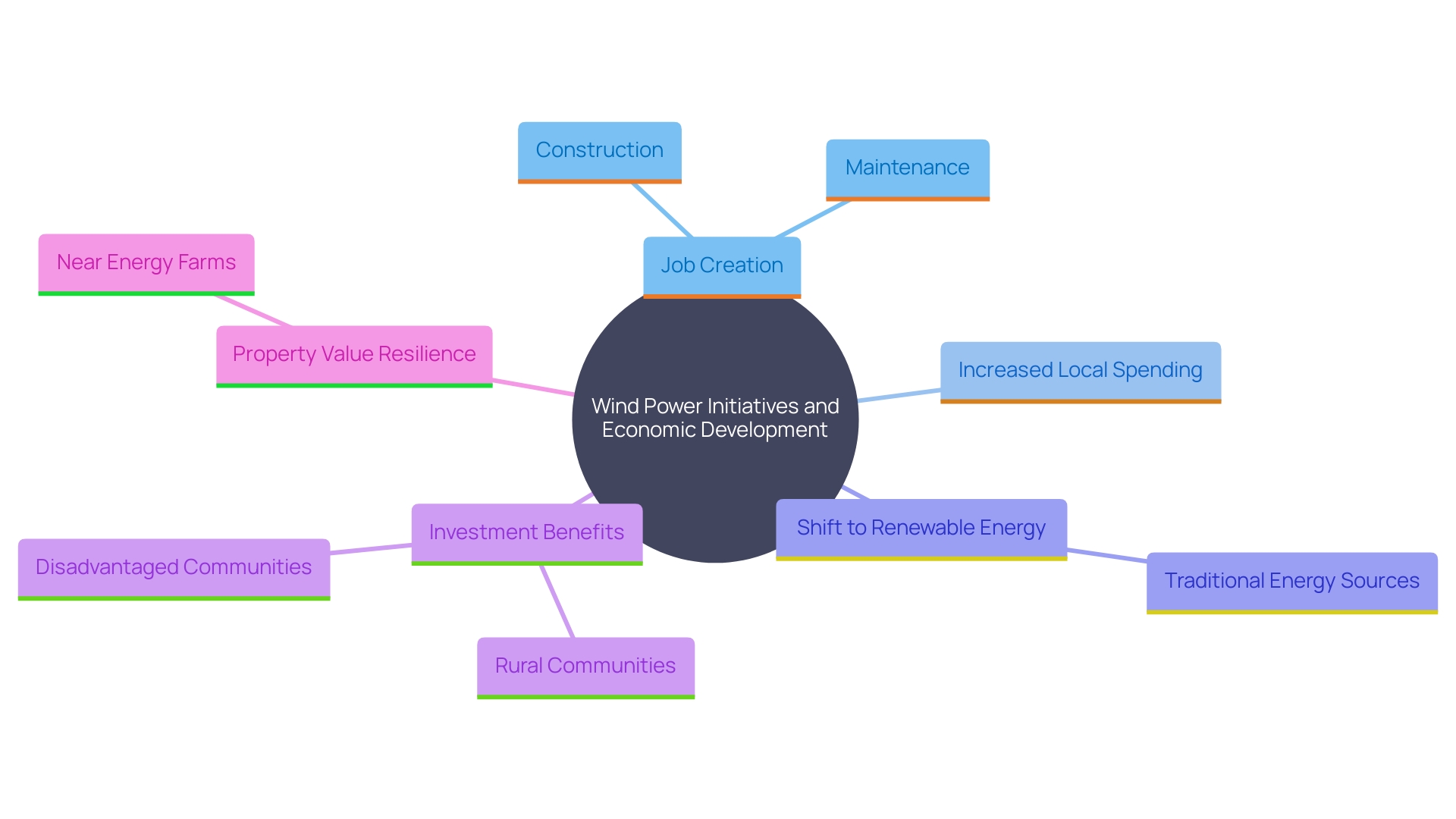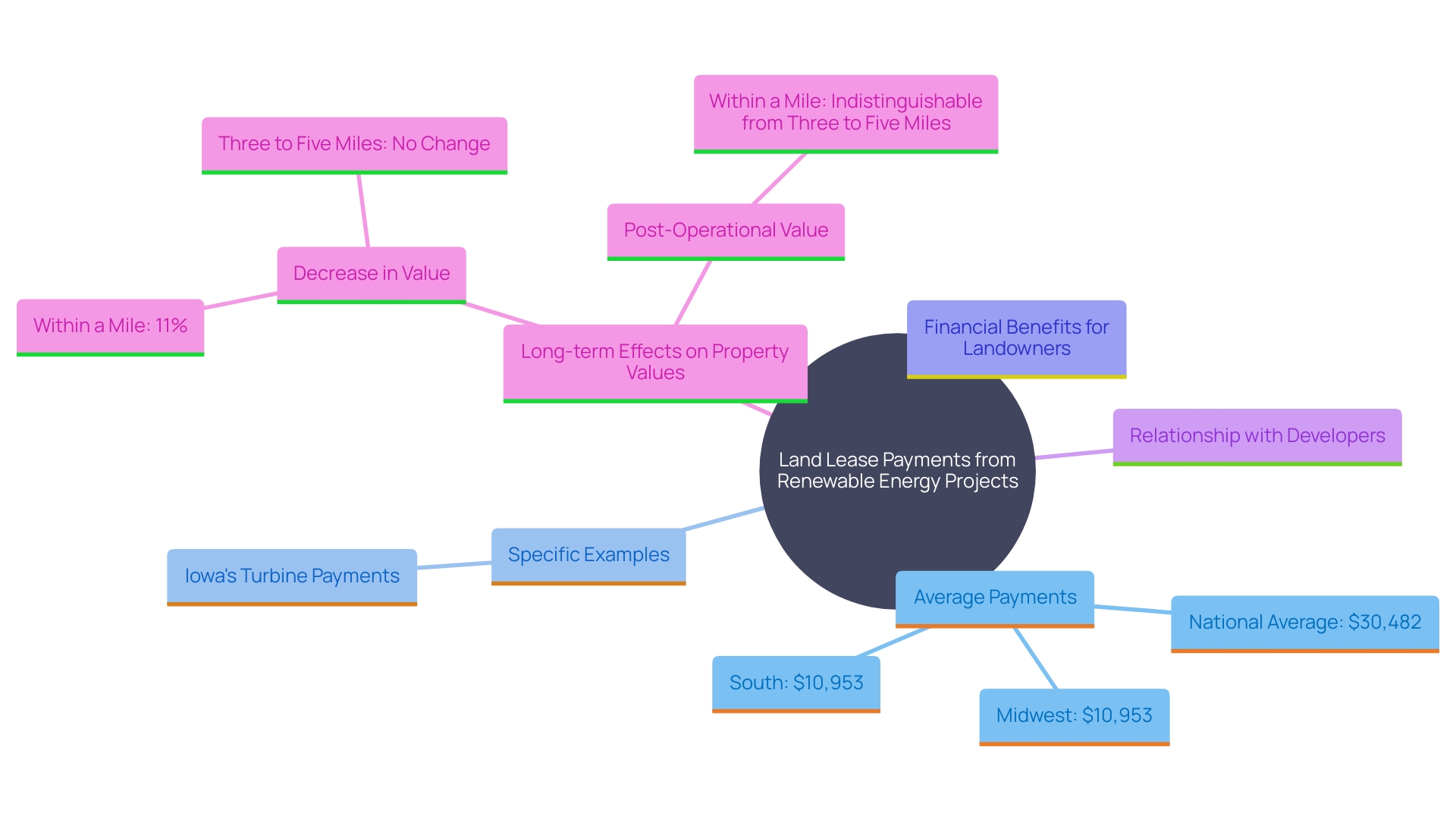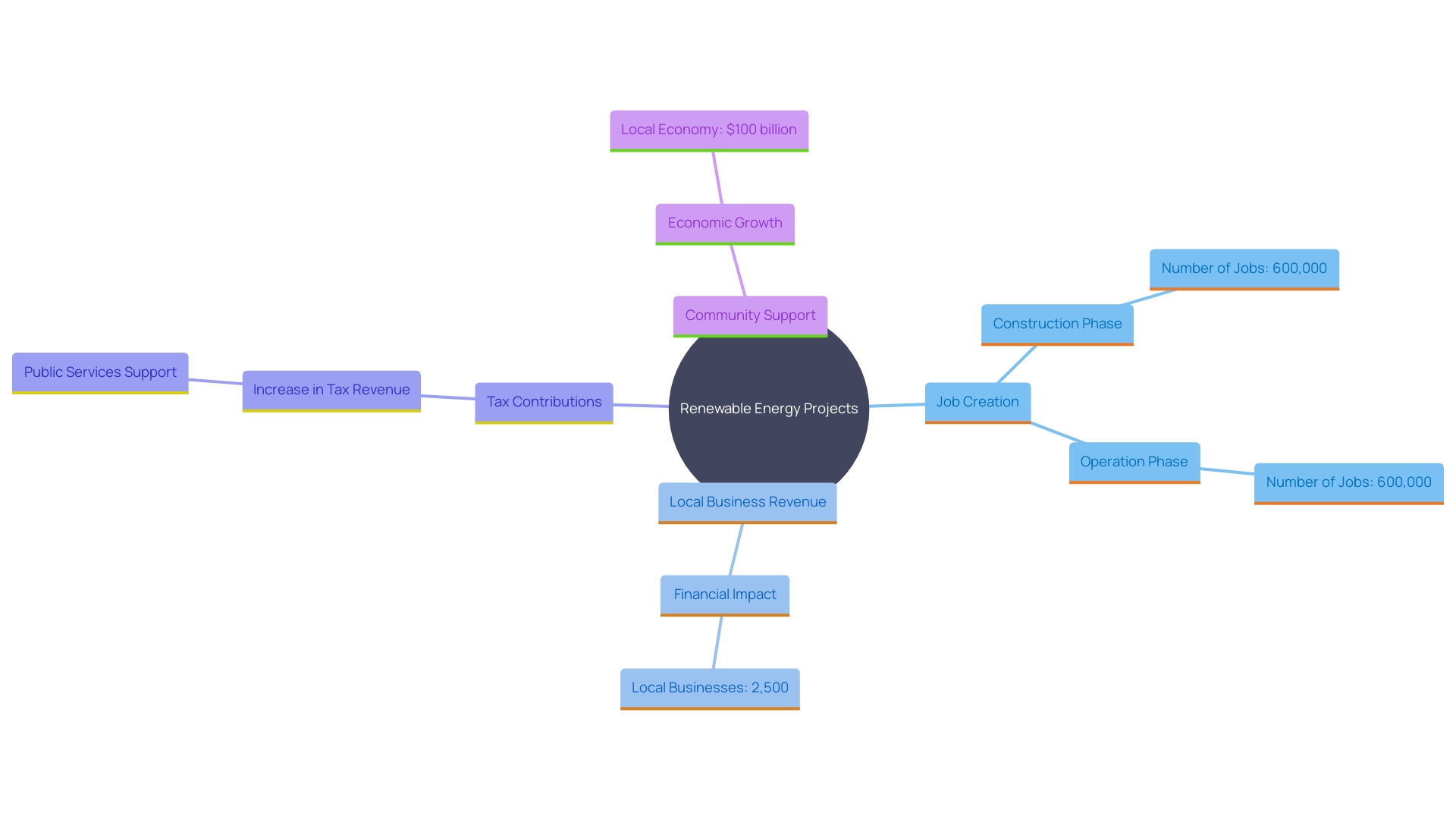Introduction
The development and expansion of wind energy projects have far-reaching implications, both environmentally and economically. While the transition to wind energy significantly reduces greenhouse gas emissions, it also necessitates a careful examination of its impact on local ecosystems, particularly bird and bat populations. Collaborative initiatives like the Wind Energy Bird & Bat Monitoring Database play a crucial role in understanding and mitigating these ecological consequences.
Additionally, the economic benefits of wind energy are substantial, driving local and regional economic growth, creating jobs, and providing vital revenue streams for landowners through land lease payments. This article delves into the intricate balance between the environmental impacts and economic advantages of wind energy, highlighting case studies and research findings that showcase the multifaceted nature of this renewable energy source.
Environmental Impacts of Wind Energy
The advancement of air power initiatives poses significant ecological consequences that need to be thoughtfully evaluated during land procurement and oversight. While energy from air offers substantial environmental benefits, such as reduced greenhouse gas emissions, the increase in these facilities also brings potential ecological consequences. One of the primary concerns is the impact on local ecosystems, particularly on bird and bat populations. The Wind Energy Bird & Bat Monitoring Database, a collaborative initiative involving the Canadian Renewable Energy Association, Canadian Wildlife Service, Birds Canada, and the Ontario Ministry of Natural Resources and Forestry, aims to enhance the understanding of these impacts. This database facilitates the collection and analysis of field data on bird and bat populations, enabling industry proponents to make informed decisions and implement effective mitigation strategies.
For example, in the Midwest United States, a large energy farm installation was linked to higher mortality rates among specific bird species. This prompted the implementation of mitigation measures, such as adjusting turbine placement and modifying operational schedules seasonally to minimize the impact. Contrary to some concerns, recent studies, including one carried out by Dr. Erik Katovich from the University of Geneva, indicate that turbines have little to no significant effect on bird populations in the United States, even among larger species believed to be at risk from turbine strikes. However, bat populations exhibit different behavior, with some species avoiding areas near turbines due to noise emissions, as shown by research from the Leibniz Institute for Zoo and Wildlife Research.
Furthermore, the transformation of land for renewable resources can result in habitat fragmentation, requiring comprehensive ecological evaluations prior to commencement. These evaluations, backed by extensive information from tracking databases, assist in ensuring that renewable initiatives are developed responsibly, balancing the demand for sustainable power with the protection of local wildlife and ecosystems. Continuous investigation and policy formulation are crucial to further reduce environmental effects and improve the sustainability of renewable initiatives.

Economic Impacts of Wind Energy
Wind power initiatives greatly enhance local and regional financial development by infusing funds and generating employment. A case study from Texas illustrates this effect, where the creation of energy farms resulted in a significant increase in economic activity. This included increased local spending and substantial job creation in both the construction and maintenance sectors. Texas, historically recognized for its oil and gas output, has emerged as a prominent state in solar power generation. This shift has been economically driven, with the state's competitive electricity market allowing consumers to benefit directly from lower wholesale power prices, saving as much as $31.5 billion since 2010.
Moreover, the influx of investments has particularly benefited rural and disadvantaged communities. In the past year, 56.6 percent of U.S. energy investment has gone to energy communities, with a significant portion directed toward areas with environmental or climate burdens and low-income communities. This trend is reshaping the economic landscape of these regions, traditionally dependent on agriculture or other industries, and is fostering a more diversified economic base.
Furthermore, the closeness of turbines to residential areas has been a point of contention. Although there are worries about the possible effect on property values, research indicates that home sale prices close to energy farms usually bounce back to pre-announcement levels within a few years of the completion of the development. This resilience emphasizes the long-term financial advantages of renewable initiatives, as they aid in community financial stability and development.
In general, power generated from air movement is demonstrating its potential as a changing influence in broadening local economies and offering new income streams, especially in countryside regions. The financial gains of these initiatives, along with the ecological benefits, render this form of power an essential element of the sustainable power framework.

Land Lease Payments and Revenue for Landowners
Land lease payments from renewable projects have become an essential revenue source for landowners, especially in the Plains area, where an average yearly payment of $39,087 was noted between 2011 and 2020. This area comprises states such as Texas and Oklahoma, which are notable in oil, natural gas, and wind power production. In contrast, the West and Atlantic regions have far fewer producers receiving such payments, with averages of 2.18% and 2.82% respectively.
An example from Iowa reveals that annual lease payments can range from $5,000 to $10,000 per turbine, depending on agreement terms. This income significantly aids landowners financially and encourages them to preserve their land for renewable power use rather than conventional agricultural practices.
Moreover, landowners frequently share favorable connections with developers, encouraging cooperative land management initiatives that are advantageous for both sides. Despite worries regarding possible reductions in property values close to energy installations, a study in Energy Policy discovered that any initial decline in property value diminishes a few years after the facility becomes operational, with values ultimately becoming indistinguishable from those situated farther away.

Local Economic Activity and Job Creation
The building and functioning of renewable power installations greatly enhance local job opportunities and financial activity. A notable case study in Minnesota demonstrated that the construction phase of a renewable energy project created approximately 600 jobs, while ongoing operations provided around 30 permanent positions. These roles encompass a wide array of skill levels, from unskilled labor to specialized engineering, emphasizing the extensive financial advantages of energy development. Additionally, the local economy benefits through increased demand for goods and services during construction, enhancing community economic vitality.
A case study by Deutsche WindGuard in Lower Saxony, Germany, emphasized that constructing and managing multiple energy parks would produce 725 million euros for the local economy and contribute 370 million euros in taxes and fees until 2040. Furthermore, clean power investments have resulted in substantial job creation in different sectors, including manufacturing, transportation, and infrastructure modernization. For instance, federal data indicates that wind-turbine technician is currently the fastest-growing job in the United States, reflecting the expanding wind energy sector's impact on employment.
Local businesses such as construction contractors, landscaping companies, and caterers also experience new revenue streams, further supporting the community's financial well-being. The financial advantages go beyond job creation to encompass increased tax income, which supports public services such as schools, police departments, and community public works initiatives. This comprehensive economic boost illustrates the profound positive impact of wind energy projects on local communities.

Conclusion
The development and expansion of wind energy projects present a complex interplay of environmental and economic factors that warrant careful consideration. While wind energy significantly contributes to the reduction of greenhouse gas emissions, it also poses challenges to local ecosystems, particularly regarding bird and bat populations. Initiatives such as the Wind Energy Bird & Bat Monitoring Database play a crucial role in addressing these ecological concerns, fostering informed decision-making and the implementation of effective mitigation strategies.
Comprehensive ecological assessments are essential to ensure that the transition to renewable energy is balanced with the preservation of local wildlife, thereby enhancing the sustainability of wind energy initiatives.
Economically, wind energy projects serve as a catalyst for local and regional growth, creating jobs and generating substantial revenue streams for landowners. Case studies, such as those from Texas and Minnesota, illustrate the transformative impact of wind energy on local economies, driving investment and fostering job creation across various sectors. The influx of capital into rural and disadvantaged communities is reshaping their economic landscapes, providing new opportunities and diversifying income sources.
Moreover, land lease payments have emerged as a vital income stream for landowners, encouraging the continued use of land for renewable energy projects.
In summary, the dual benefits of wind energy—environmental sustainability and economic growth—underscore its critical role in the renewable energy landscape. By addressing ecological impacts through collaborative monitoring and fostering economic opportunities in local communities, wind energy can contribute to a more sustainable and resilient future. The continued development of wind energy projects, guided by thorough research and responsible practices, promises to deliver long-term benefits that align with both environmental goals and economic needs.




